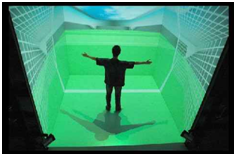New Citations | Down’s Syndrome, Sleep Monitoring, Consumer Responses
BIOPAC provides software and hardware that allows research teams to record and analyze  numerous body signals for physiological experimentation. Here are a few notable studies using BIOPAC equipment that cover Respiration, EEG, and Neuromarketing.
numerous body signals for physiological experimentation. Here are a few notable studies using BIOPAC equipment that cover Respiration, EEG, and Neuromarketing.
Breathe Easy
In this study, a mathematician from Simpson College uses her skills and students’ respiratory studies conducted with Biopac Student Lab equipment (BSL 4 Software and MP36 Data Acquisition Unit) to help tailor a more effective treatment for her Down’s Syndrome child.
The Upside of Down’s Syndrome: Math Is My Superpower! (Heidi Berger)
Sleep Activity
In addition to measuring steps and other physical activity metrics, body-worn activity monitors are designed to measure sleep quantity and quality. However, little research has assessed activity monitors’ sleep tracking accuracy or compared accuracy among different brands and models of monitors. The purpose of this study was to validate and compare several activity monitors for assessment of total sleep time and stages of sleep throughout a night. The BIOPAC MP160 System with EEG100C amplifiers was used to collect the necessary EEG data during the sleep study.
Accuracy of Activity Monitors in Assessing Sleep (John Mitrzyk, Natashia Swalve, Brianna Harfmann, and Alexander HK. Montoye)
Visually Fashionable
This study investigates the effect of visual complexity in a fashion store on affective/behavioral responses using self-report and psychophysiological measures. Two experiments were conducted to test the proposed effects of visual complexity. The results showed that high-visual complexity in a fashion store has a negative effect on pleasure when consumers’ fashion involvement level is low, but such negative effect of visual complexity diminished in consumers with high fashion involvement. The findings provide novel understanding of the effects of store’s visual complexity to consumers. BIOPAC AcqKnowledge data acquisition and analysis software was used to record and analyze the data.
Store Design: Visual Complexity and Consumer Responses (Ju Yeun Jang, Eunsoo Baek, So-Yeon Yoon, Ho Jung Choo)
Stay Connected